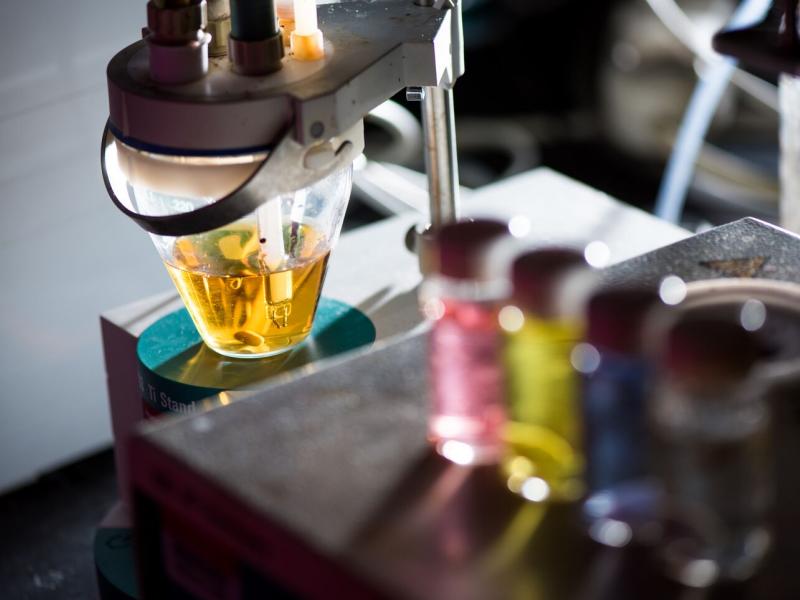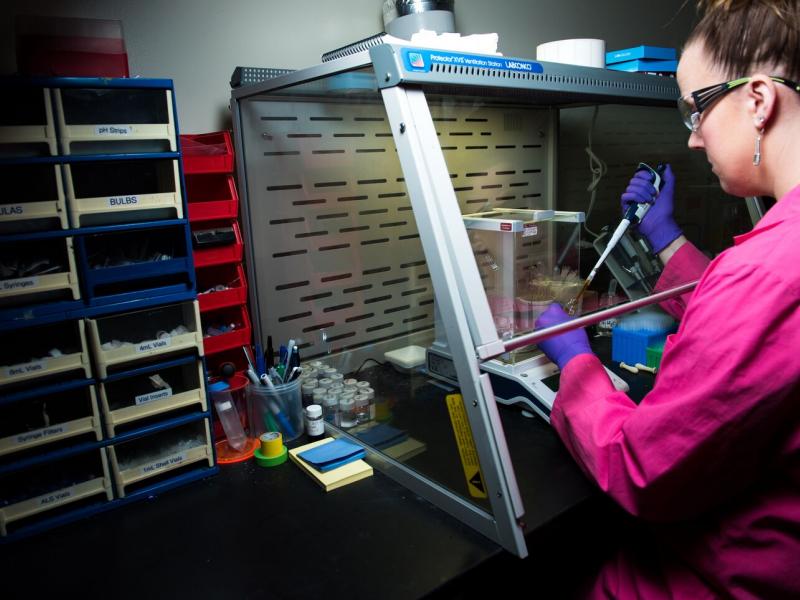Teresa Lemmon and Marie Swita spend their days separating and analyzing materials. In the Analytical Chemistry Laboratory (ACL) at the Bioproducts, Sciences and Engineering Laboratory on the Washington State University Tri-Cities campus, the Pacific Northwest National Laboratory (PNNL) pair is like a well-oiled machine.
Last year, alone, they processed more than 14,000 samples for around 50 projects. And before the Washington State Governor's stay-at-home order, this year's numbers were tracking to be even higher.
"Working from home the past few months slowed the numbers," said Swita. "We were working hard up to the minute they closed the doors, but now we're back."

Processing in-house saves time and money
The ACL is an on-campus service center available to PNNL staff. With 25 instruments that perform eight different types of analyses, it's a Disneyland for chemists-minus the long lines. Having this suite of capabilities in one place increases efficiency of sample processing and decreases wait time.
Chemist Heather Job is a 15-year veteran of PNNL and she's been with the ACL from the beginning. "We started the in-house analytical services about 10 years ago," said Job. "Projects were sending their samples elsewhere, spending roughly $200 for one elemental analysis. I called it the "wild west" because everyone was doing their own thing."
Lemmon added, "Sending samples offsite could mean a three month wait for analyses. By keeping them on campus and having the flexibility to shift and prioritize the work according to project needs, we can usually process samples within a couple of days."
The ACL also enables collaboration between the researchers and analytical chemists, thus creating a pedigree for the data.
"The instruments are not black boxes," explained Corinne Drennan, team lead for Process Engineering in the Energy and Environment Directorate. "They are continuously monitored and re-configured to provide reliable methods and data for our sponsor's ever-changing needs. Active collaboration between analyst and researcher means that methods, assumptions, and data may be questioned at any time to develop the most robust information possible."
For researchers and budgets, that's valuable time saved.
The efficiency, in part, is due to the luxury of processing samples across multiple instruments. A portion of a sample may be analyzed on both a gas chromatograph and a liquid chromatograph for more appropriate chemical characterization, for example. Once analyzed according to an agreed workplan, Lemmon and Swita often confer with the sample owner, offering suggestions for further analyses. And the process is streamlined because the samples remain in the same room, with experts who understand the capabilities of each instrument and what information needs to be elicited from the samples.

The guts of the laboratory
Roughly one-third of the ACL instruments are "typical chromatography instruments," said Job. The rest are specialized and complex to run and maintain, but by having them in the ACL, skilled chemists who use them every day can perform operations and maintenance at any time.
Incredibly, each scientist can run every instrument in the laboratory. Lemmon and Swita, though, are considered the resident experts, offering a combined 35+ years of experience.
"It's both luck and magic to have the right people work together," said Swita. "Our strength is communication with each other and the researchers we support."
"We put our pride aside and always double-check each other, so every analysis has a quality control," added Lemmon. "We ask ourselves and each other if the results make sense and if the quality control checks are within specification."
It's this "good data" that drives them.
And, vice versa, they drive the quality of the data.
It's both luck and magic to have the right people work together. -Marie Swita
"Sometimes researchers can describe to us what, exactly, they hope to get out of an analysis," said Lemmon. "They may not realize there's a better or more appropriate instrument in our laboratory that will yield better quality data based on their matrix, analytes, or project needs. It's this counsel that makes our job so fun."
To learn more about the Chemical and Biological Process group, visit:
https://www.pnnl.gov/waste-energy-and-products
https://www.pnnl.gov/process-development-units






